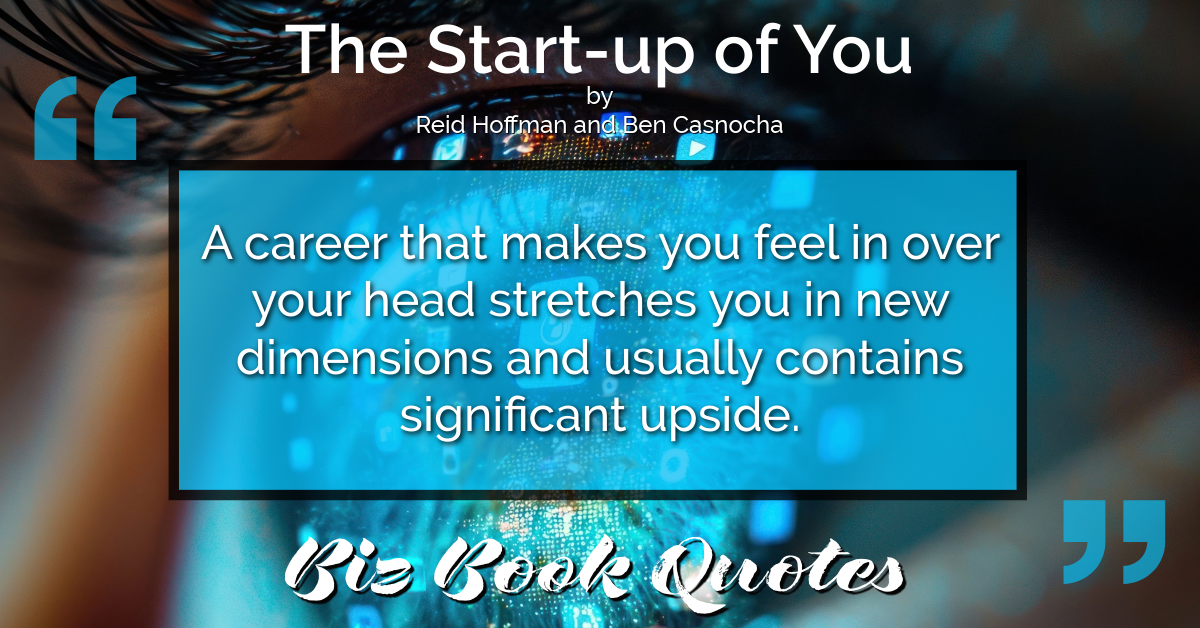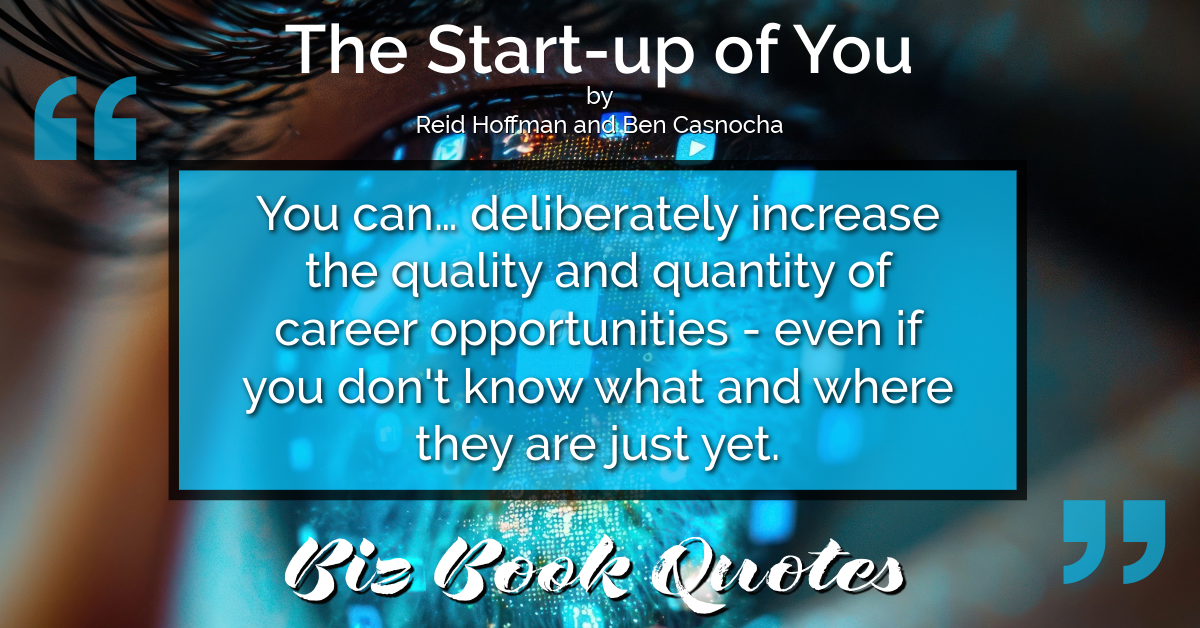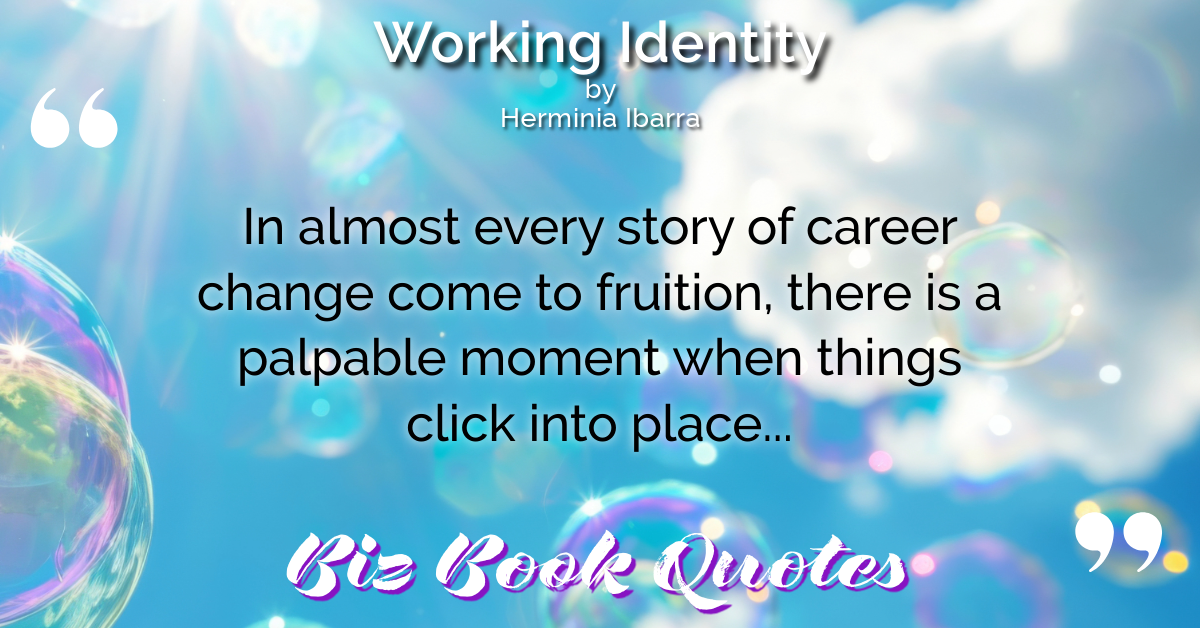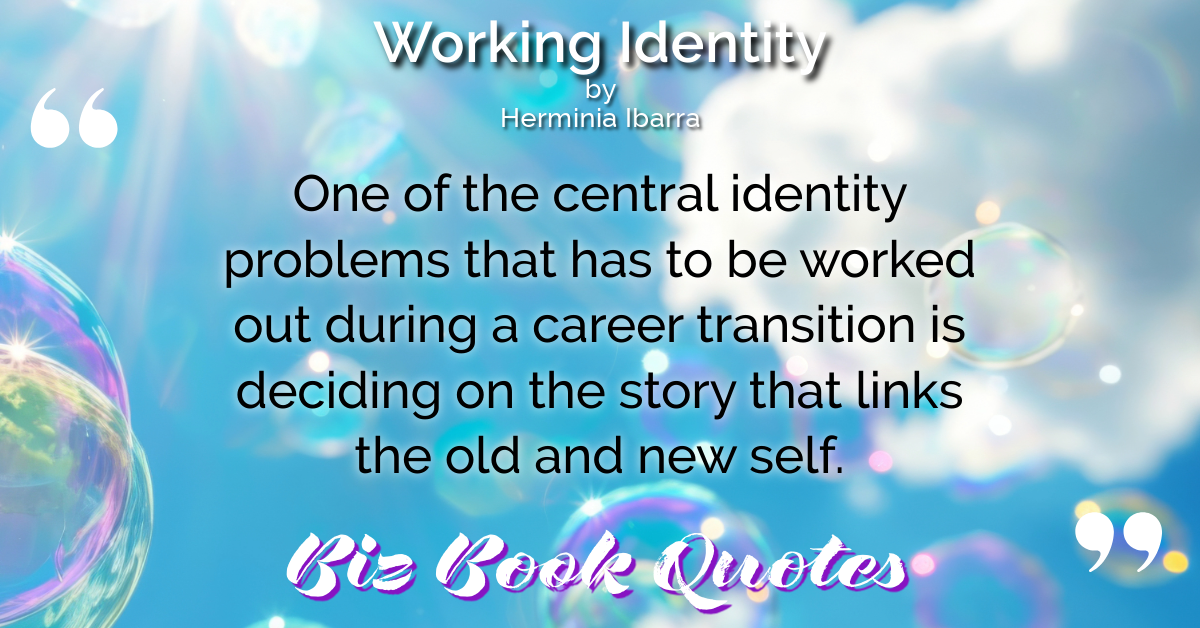 |
A career that makes you feel in over your head stretches you in new dimensions and usually contains significant upside.
|
147 |
 |
You can… deliberately increase the quality and quantity of career opportunities – even if you don’t know what and where they are just yet.
|
147 |
 |
…most successful companies and careers in fact go through many adaptations and iterations. They never really arrive at a fixed destination; it’s an endless journey.
|
149 |
 |
To move forward in your career, you have to commit to specific opportunities as part of an iterative plan, despite doubt and despite inconvenience. If not now, when?
|
170 |
 |
If you don’t have to seriously think about the risk involved in a career opportunity, it’s probably not the breakout opportunity you’re looking for.
|
176 |
 |
By introducing regular volatility into your career, you make surprise survivable.
|
189 |
 |
Jobs, careers, and valued skills mutate at unprecedented rates, driven by tectonic global shifts.
|
153 |
 |
In career transitions, the basic assumptions that typically prove most resistant to change concern our emotional relationships with institutions, our benchmarks for success, and our preconceived notions about viable work arrangements.
|
082 |
 |
In almost every story of career change come to fruition, there is a palpable moment when things click into place…
|
146 |
 |
One of the central identity problems that has to be worked out during a career transition is deciding on the story that links the old and new self.
|
156 |